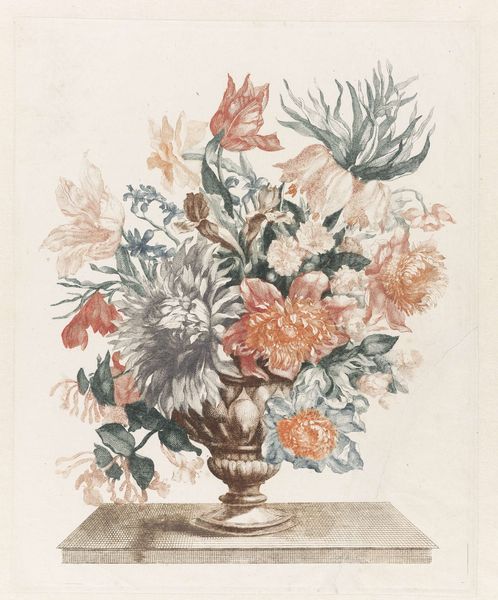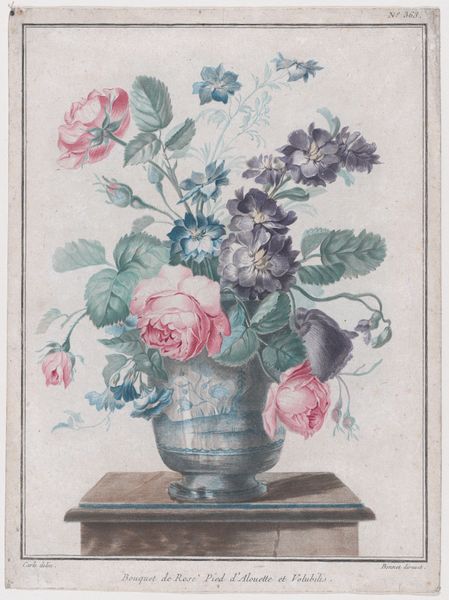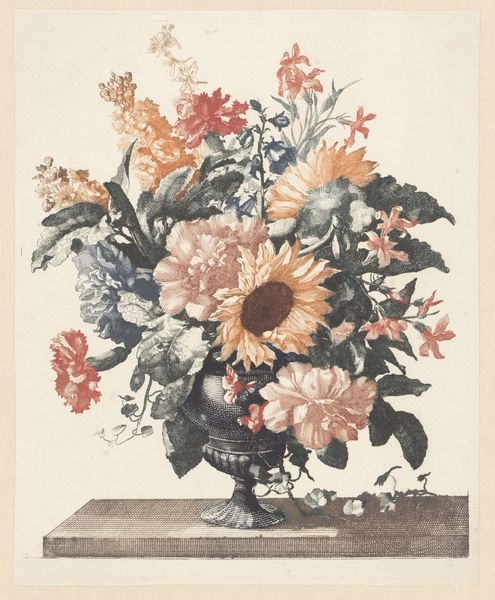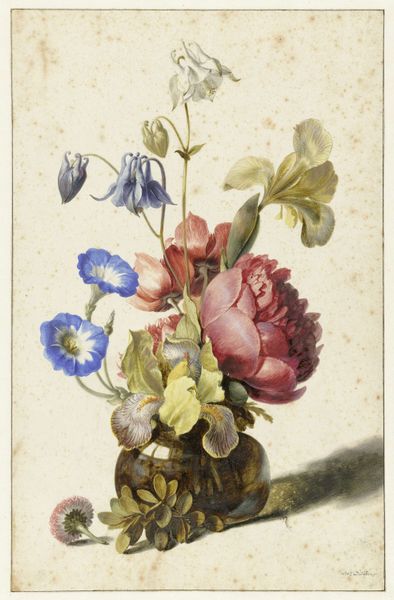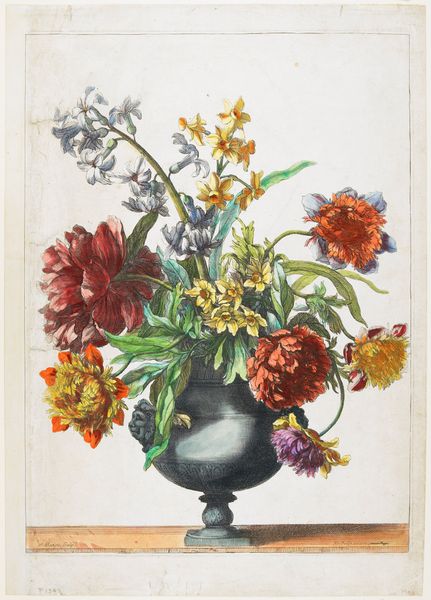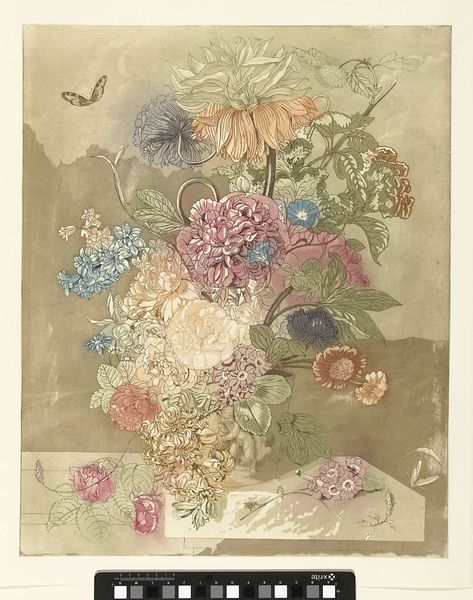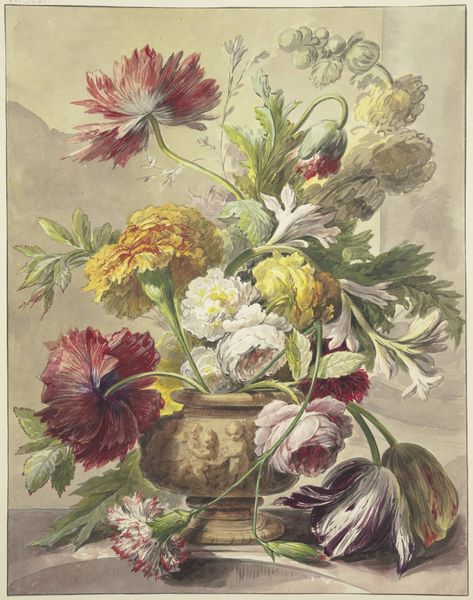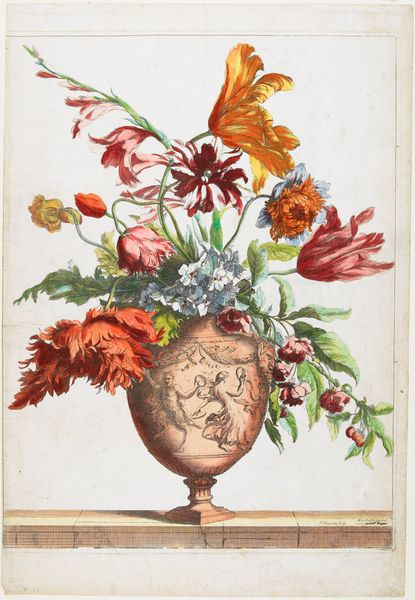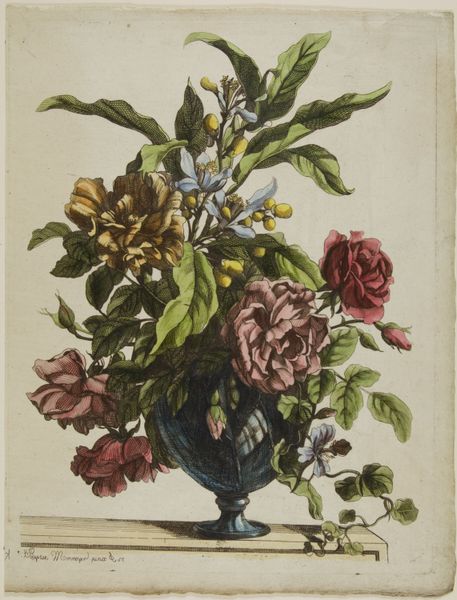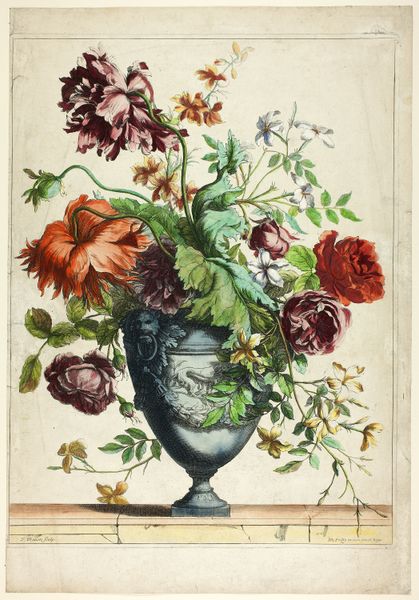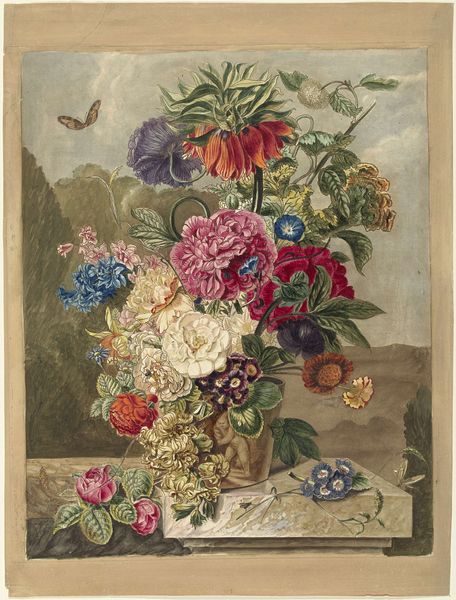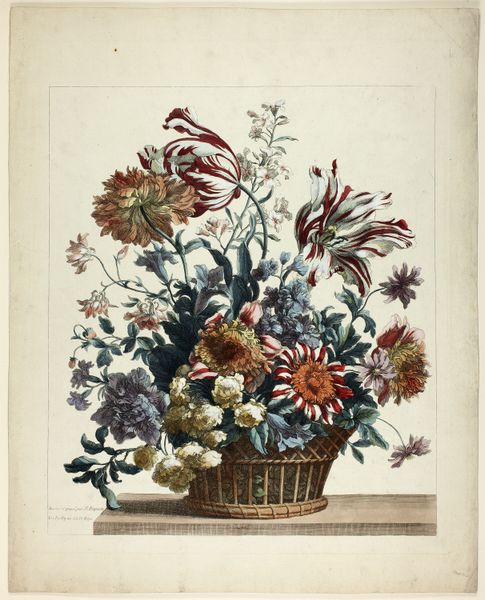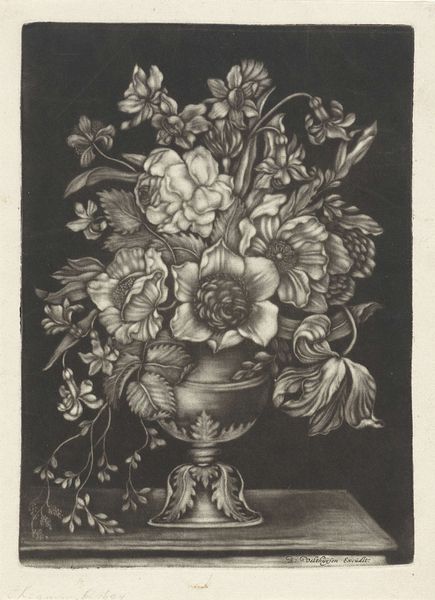
painting, watercolor
#
baroque
#
painting
#
watercolor
#
watercolor
Dimensions: height 306 mm, width 254 mm
Copyright: Rijks Museum: Open Domain
J. Waterloos created this ‘Vase with Flowers,’ though we don’t know exactly when. The dramatic arrangement reflects the Dutch still life tradition which emphasized both the beauty and the ephemerality of nature. Floral paintings were not merely decorative; they were potent symbols of status and wealth. During the Dutch Golden Age, rare flowers, particularly tulips, were luxury commodities, with the art market sometimes reflecting and affecting the actual market for flowers. The dark background and dramatic lighting enhance the precious quality of the bouquet. However, there’s a tension here, as the flowers are shown withering, their blooms heavy and beginning to droop. The presence of insects and a spider’s web remind us of mortality. "We enjoy the visible, but we must also understand what is hidden," Waterloos might say, pointing to the veiled vanitas theme which underscores the transience of beauty and life itself. Does this artwork celebrate life's fleeting beauty or mourn its inevitable decay? Or does it do both?
Comments
rijksmuseum about 2 years ago
⋮
The demand for prints of vases with flowers must have been enormous in the 17th century. They were produced in every known printmaking process, including mezzotint. This technique developed only after 1650 and was praised because it approximated the art of painting so closely. This, incidentally, did not apply to the colours: the ones here were added separately by hand.
Join the conversation
Join millions of artists and users on Artera today and experience the ultimate creative platform.
